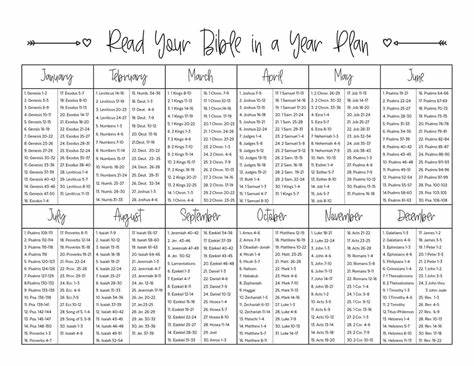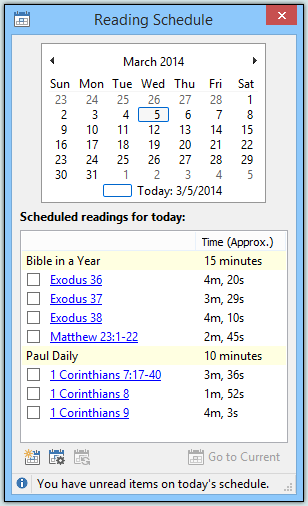Contents
Introduction to Reading the Bible in a Year
Embarking on a journey to read the Bible cover to cover within a year is a profound endeavor that holds immense spiritual significance and personal enrichment. The Bible, revered as the sacred text of Christianity, is a repository of timeless wisdom, divine inspiration, and profound truths that have shaped civilizations and transformed countless lives throughout history. In this comprehensive guide, we explore the importance, benefits, and practical considerations of engaging in the systematic reading of the Bible over the course of a year.
At its core, the practice of reading the Bible in a year is rooted in a deep reverence for scripture and a desire to immerse oneself in the entirety of God’s word. It is an intentional commitment to journey through the rich tapestry of narratives, poetry, prophecies, and teachings that comprise the Bible, gaining insight into the character of God, the nature of humanity, and the overarching narrative of redemption woven throughout its pages.
The decision to read the Bible in a year is driven by a myriad of motivations. For some, it is a pursuit of spiritual growth and a desire to deepen their understanding of God’s word. For others, it is a means of fostering discipline, consistency, and devotion in their daily lives. Regardless of the impetus, the journey of reading the Bible in a year offers an unparalleled opportunity for personal transformation, spiritual renewal, and intimate communion with the divine.
Completing the Bible in a year is not merely a matter of academic accomplishment or intellectual pursuit; it is a deeply personal and transformative experience that has the potential to shape one’s beliefs, values, and worldview in profound ways. It is a journey of discovery, revelation, and encounter—a sacred pilgrimage through the sacred text that holds the power to illuminate, convict, and inspire the human soul.
In the pages that follow, we will delve into the practical aspects of reading the Bible in a year, including selecting a reading plan, setting realistic goals, establishing a daily routine, implementing reading strategies, overcoming challenges, cultivating reflection and application, and celebrating milestones and progress. Through a comprehensive exploration of these topics, we aim to equip and empower individuals to embark on this transformative journey with confidence, purpose, and unwavering resolve.
As we embark on this journey together, may we approach the reading of God’s word with humility, reverence, and an open heart, trusting that in its pages, we will find wisdom, guidance, and the fullness of life that comes from knowing and walking in the ways of the Almighty. May this journey be a source of blessing, inspiration, and spiritual enrichment, leading us ever closer to the heart of God and the abundant life that awaits those who seek Him with all their heart, soul, and mind.

Selecting a Reading Plan
In the pursuit of reading the Bible in a year, selecting an appropriate reading plan is a pivotal step that shapes the entire journey. The vastness and diversity of the Bible can be both awe-inspiring and daunting, making a structured plan an invaluable guide. In this section, we delve into the considerations, options, and resources involved in choosing a reading plan that aligns with personal preferences, goals, and the desire for a meaningful encounter with scripture.
Understanding Different Reading Plans:
Chronological: This plan follows the chronological order of events as they occurred in history, offering a unique perspective on the unfolding narrative of the Bible.
Thematic: Focused on specific themes or topics, this plan allows for an in-depth exploration of particular aspects of scripture, offering a more concentrated understanding.
Old Testament/New Testament: This approach alternates between readings from the Old and New Testaments, providing a balanced exposure to both parts of the Bible.
Considering Personal Preferences and Goals:
Devotional vs. Academic: Determine whether the primary goal is personal devotion and spiritual growth or a more academic exploration of scripture. This distinction can influence the depth and pace of the chosen reading plan.
Translation Preferences: Consider the translation of the Bible that resonates most personally. Whether it’s a more traditional version like the King James Version or a modern translation like the New International Version, selecting a translation enhances readability and comprehension.
Exploring Available Resources and Tools:
Online Platforms: Utilize online platforms and apps that offer a variety of reading plans, progress tracking, and supplementary resources. Platforms like YouVersion, BibleGateway, and Blue Letter Bible provide accessible tools for a seamless reading experience.
Printed Guides: Physical guides and reading schedules are available in printed formats, offering a tangible resource for those who prefer a non-digital approach. These guides often provide additional insights, reflections, and study aids.
Selecting a reading plan is a personal decision, influenced by individual preferences, spiritual goals, and the desire for a meaningful engagement with scripture. In the subsequent sections, we will explore how to set realistic goals, establish a daily reading routine, and implement effective reading strategies to navigate this transformative journey through the pages of the Bible.
Setting Realistic Goals
As individuals embark on the journey of reading the Bible in a year, setting realistic goals serves as a foundational step toward success and fulfillment in the endeavor. By carefully assessing personal time commitments, establishing achievable milestones, and maintaining a balanced approach, readers can navigate the challenges and complexities of this ambitious undertaking with confidence and purpose. In this section, we delve into the essential aspects of setting realistic goals for reading the Bible in a year:
Assessing Personal Time Commitments:
Evaluate daily schedules and commitments to identify available time slots for Bible reading.
Consider factors such as work, family obligations, and other responsibilities when determining optimal reading times.
Be realistic about time constraints and prioritize consistency over quantity in reading sessions.
Establishing a Realistic Reading Schedule:
Determine the total number of chapters or pages to read each day to complete the Bible within the designated timeframe. Break down the reading schedule into manageable portions that align with personal preferences and attention span. Consider variations in reading pace and adjust the schedule accordingly to accommodate busy periods or unforeseen circumstances.
Setting Achievable Milestones and Targets:
Divide the Bible into sections or books and set specific milestones for completing each portion. Establish incremental targets for progress, such as completing a certain number of chapters or books within predefined timeframes. Celebrate milestones along the way to maintain motivation and momentum throughout the year-long journey.
Setting realistic goals requires a balance between ambition and practicality, allowing readers to challenge themselves while also acknowledging their limitations and constraints. By adopting a flexible and adaptive approach to goal-setting, individuals can navigate the intricacies of reading the Bible in a year with resilience, perseverance, and a steadfast commitment to spiritual growth and enrichment.
In the subsequent sections, we will explore practical strategies for establishing a daily reading routine, implementing effective reading strategies, and overcoming challenges encountered along the way. Through intentional goal-setting and dedicated effort, readers can embark on this transformative journey with clarity of purpose and unwavering determination.
Establishing a Daily Reading Routine:
Creating a consistent daily reading routine is key to successfully reading the Bible in a year. Here are the essential elements to consider when establishing your daily reading routine:
Designating a Consistent Time and Place:
Choose a time of day that works best for you and aligns with your schedule, whether it’s in the morning, during lunch break, or before bed. Select a quiet and comfortable place free from distractions where you can focus on your reading without interruptions.
Allocating Adequate Time for Reading:
Determine the amount of time you can realistically devote to Bible reading each day based on your schedule and commitments.
Prioritize consistency over quantity by setting aside a manageable amount of time for reading, even if it’s just a few minutes each day.
Incorporating Reflection and Prayer:
Begin your reading sessions with a moment of prayer, inviting God’s presence and guidance as you engage with His word.
Take time to reflect on the passages you’ve read, allowing their meaning and significance to resonate deeply within your heart and mind.
Journaling and Note-Taking:
Keep a journal or notebook handy to jot down insights, questions, and reflections that arise during your reading. Write down key verses, quotes, or concepts that resonate with you, and consider how they apply to your life and faith journey.
Staying Flexible and Adaptable:
Recognize that life’s demands and circumstances may vary from day to day, and be willing to adjust your reading routine accordingly. Don’t be discouraged by occasional interruptions or deviations from your schedule; instead, strive to maintain consistency and perseverance in your daily reading habit.
Establishing a daily reading routine requires discipline, commitment, and a willingness to prioritize spiritual growth and nourishment. By carving out dedicated time for Bible reading each day and creating a conducive environment for reflection and engagement, you can cultivate a deep and meaningful connection with God’s word that enriches your life and strengthens your faith journey.
Implementing Reading Strategies:
Implementing effective reading strategies is essential for maximizing comprehension, retention, and engagement during the journey of reading the Bible in a year. Here are practical strategies to enhance your reading experience:
Breaking Down Readings into Manageable Portions:
Divide daily readings into smaller sections or chapters to prevent overwhelm and facilitate focused engagement. Set specific goals for each reading session, aiming to complete one section or chapter at a time.
Utilizing Study Aids and Resources:
Incorporate study aids such as concordances, commentaries, and study Bibles to gain deeper insights into scripture passages. Take advantage of online resources, audio versions, and visual aids to supplement your reading and enhance understanding.
Applying Techniques for Comprehension and Retention:
Practice active reading techniques, such as underlining key passages, making annotations, and asking questions to enhance comprehension. Summarize each section or chapter in your own words to reinforce understanding and retention.
Engaging in Reflective and Meditative Reading:
Pause periodically during your reading to reflect on the meaning and significance of scripture passages. Meditate on verses or themes that resonate with you, allowing them to speak to your heart and shape your thoughts and actions.
Participating in Group Discussions and Reflections:
Join a Bible study group or online community to discuss and reflect on readings with fellow participants. Share insights, questions, and reflections with others to gain diverse perspectives and deepen your understanding of scripture.
By implementing these reading strategies, you can enhance your comprehension, retention, and engagement with the Bible, making the journey of reading it in a year more enriching and transformative. Remember to approach each reading session with an open heart and a spirit of curiosity and reverence, allowing God’s word to speak to you in profound and meaningful ways.

Overcoming Challenges:
Throughout the journey of reading the Bible in a year, various challenges may arise that threaten to derail progress or dampen enthusiasm. By recognizing common obstacles and adopting proactive strategies, individuals can overcome challenges and stay committed to their goal. Here are key considerations for navigating challenges:
Addressing Time Constraints and Busy Schedules:
Prioritize Bible reading as a non-negotiable part of your daily routine, even amid busy schedules. Allocate dedicated time slots for reading, making it a priority over less essential activities.
Combatting Distractions and Maintaining Focus:
Create a conducive environment for reading by minimizing distractions and noise. Consider implementing mindfulness techniques or meditation practices to enhance focus and concentration during reading sessions.
Dealing with Spiritual Dryness or Lack of Motivation:
Stay connected to your spiritual community for encouragement, support, and accountability. Engage in prayer and meditation to rejuvenate your spiritual life and reignite your passion for God’s word.
Seek guidance from trusted mentors, pastors, or scholars when encountering difficult or ambiguous passages. Use supplementary resources such as study guides or commentaries to gain clarity and insight into challenging passages.
Adapting to Unforeseen Circumstances or Setbacks:
Embrace flexibility and resilience in the face of unexpected challenges or disruptions to your reading routine. Allow yourself grace and forgiveness for missed readings or lapses in consistency, focusing instead on resuming your journey with renewed dedication.
By acknowledging and actively addressing challenges, individuals can maintain momentum and perseverance on their journey of reading the Bible in a year. Remember that challenges are an inevitable part of any significant undertaking, but with determination, resilience, and reliance on God’s strength, they can be overcome, leading to deeper spiritual growth and transformation.
Cultivating Reflection and Application:
Reading the Bible in a year is not merely about consuming content but also about internalizing its teachings and applying them to one’s life. Cultivating reflection and application enhances the transformative power of scripture and enriches the spiritual journey. Here are key considerations for fostering reflection and application:
Engaging in Meditation and Contemplation:
Set aside time for quiet reflection and meditation on scripture passages. Allow the words of the Bible to resonate deeply within your heart and mind, pondering their significance and relevance to your life.
Seeking Insights Through Prayer and Study:
Approach scripture with a spirit of prayer, inviting God’s guidance and illumination as you read and reflect. Invest time in studying the historical and cultural context of passages to gain deeper understanding and insight.
Applying Biblical Principles to Daily Life:
Identify practical applications of biblical teachings and principles in your personal relationships, work, and everyday decisions. Consider how scripture informs your values, attitudes, and behaviors, guiding you toward greater alignment with God’s will.
Embracing Personal Growth and Transformation:
Be open to the ways in which scripture challenges and convicts you, prompting growth and transformation in your spiritual journey. Embrace opportunities for self-examination, repentance, and renewal as you seek to live out the truths of God’s word in your life.
Sharing Insights and Experiences:
Engage in meaningful discussions and share insights gleaned from your reading with fellow believers or within a community of faith. Encourage others through your personal testimonies and experiences of how God’s word has impacted and transformed your life.
By cultivating reflection and application, individuals can deepen their relationship with God and experience profound spiritual growth as they journey through the pages of the Bible. Remember that the ultimate goal is not merely to read the Bible but to allow its truths to shape and inform every aspect of your life, leading to a closer walk with God and a life lived in accordance with his purposes and principles.
Celebrating Milestones and Progress:
As individuals journey through the process of reading the Bible in a year, it’s essential to celebrate milestones and acknowledge progress along the way. Recognizing achievements not only fosters a sense of accomplishment but also provides motivation to continue pressing forward. Here are ways to celebrate milestones and progress:
Acknowledging Completed Books or Sections:
Take time to reflect and celebrate the completion of individual books or sections of the Bible. Pause to acknowledge the significance of each milestone and express gratitude for the insights gained from the readings.
Marking Progress and Achievements:
Keep track of your progress using a journal, checklist, or progress tracker. Celebrate reaching halfway points, quarter marks, or other significant milestones in your reading plan.
Reflecting on Personal Growth and Insights:
Pause periodically to reflect on the personal growth and insights gained from reading the Bible consistently. Consider journaling or writing down reflections on how scripture has impacted your life and deepened your understanding of God.
Sharing Testimonies and Encouraging Others:
Share your experiences and testimonies of how reading the Bible has enriched your spiritual journey with others. Encourage fellow readers who may be facing challenges or setbacks by sharing words of encouragement and support.
Celebrating Together as a Community:
Consider organizing group celebrations or gatherings within your faith community to commemorate milestones collectively. Use these opportunities to share experiences, insights, and testimonies, fostering a sense of camaraderie and mutual encouragement.
By celebrating milestones and progress, individuals can cultivate a sense of achievement, motivation, and encouragement to continue their journey of reading the Bible in a year. Remember that each milestone represents a step forward in your spiritual growth and a testament to your commitment to deepen your relationship with God through His word.
Conclusion:
As we conclude this guide on reading the Bible in a year, it’s important to reflect on the transformative journey that lies ahead and the profound impact it can have on our lives. Through intentional engagement with scripture, we have the opportunity to deepen our understanding of God, strengthen our faith, and experience personal transformation in profound ways.
The journey of reading the Bible in a year is not merely a task to be completed but a sacred pilgrimage—a journey of the heart and soul that leads us into deeper intimacy with our Creator. As we have explored throughout this guide, the process involves selecting a reading plan, setting realistic goals, establishing a daily routine, implementing effective strategies, overcoming challenges, and celebrating milestones along the way.
As you embark on this journey, may you approach it with an open heart, a spirit of humility, and a willingness to be transformed by the truths of God’s word. May you find joy in the discovery of new insights, comfort in the familiarity of familiar passages, and strength in the promises that sustain us through life’s challenges.
Remember that the journey of reading the Bible in a year is not without its challenges and setbacks, but it is in the journey itself that we find growth, resilience, and a deeper understanding of God’s love and faithfulness. So, whether you find yourself on the mountaintop or in the valley, may you continue to press on with determination, perseverance, and unwavering faith.
As you embark on this sacred journey, may the words of scripture be a lamp unto your feet and a light unto your path, guiding you, sustaining you, and transforming you each step of the way. May you experience the richness, depth, and beauty of God’s word in new and profound ways, and may it become a source of strength, wisdom, and inspiration for all your days.
May this journey of reading the Bible in a year be a testament to your commitment to seek God’s truth, to grow in faith, and to walk in the light of His love. And may you emerge from this journey with a deeper understanding of who God is, who you are in Him, and the incredible journey of faith that lies ahead.



